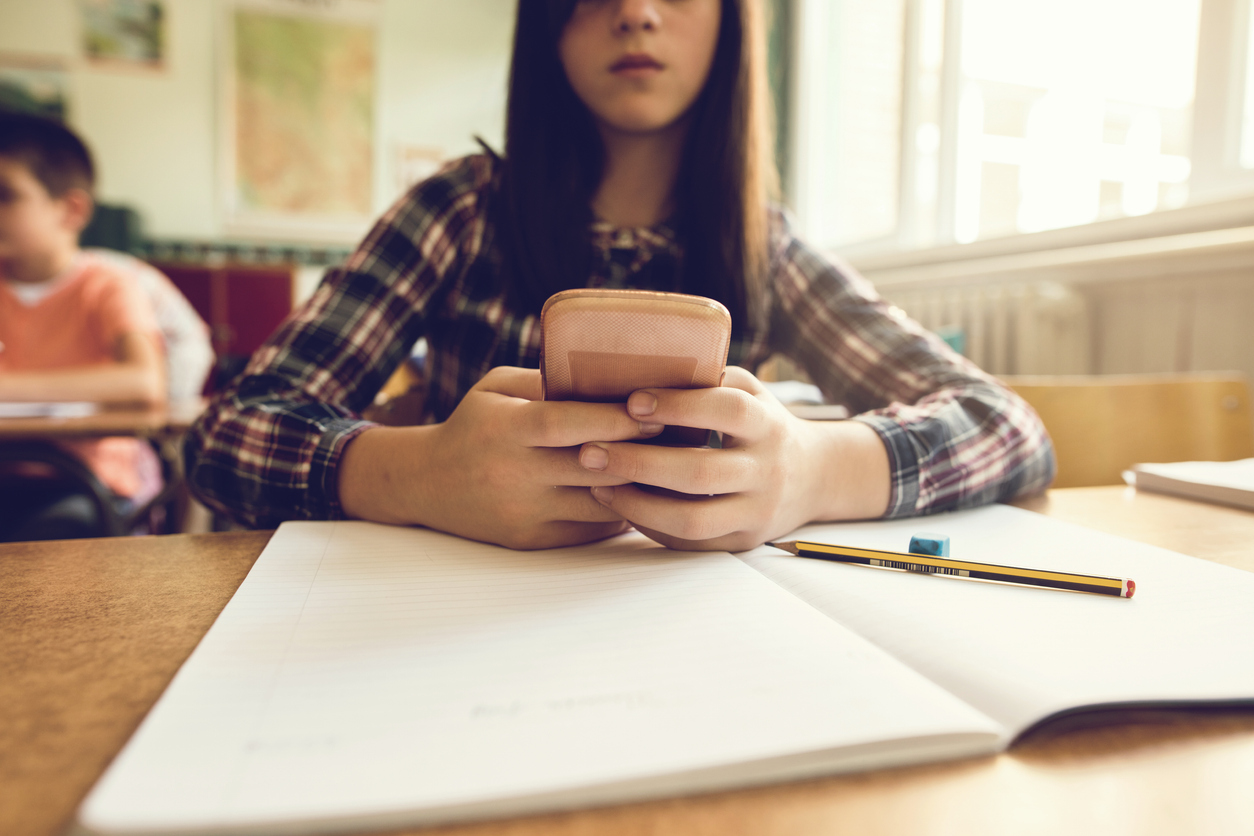
Cellphones are the ultimate gateway drug for children and should be banned from classrooms
Danny Randell, National Post, August 27, 2024
As students prepare to head back to school, it’s high time parents and policymakers take stock of how smartphones are negatively impacting Canadian kids.
Self-control is harder for children than it is for adults. That’s why we limit their access to things like sugar and alcohol. Yet most kids have unlimited access to an endless source of distraction: their cellphones — and they’re addicted.
Smartphones and social media are wreaking havoc on our schools and our kids: Teachers have noted addict-like behaviour when trying to enforce cellphone restrictions. Symptoms range from an inability to stop scrolling, to a “fear” of being separated from their device to angry outbursts when their phone is taken away.
Ten years ago, smartphones and social media were still relatively new phenomena, but there is now data to suggest that these technologies pose a serious problem to young people’s ability to learn. One study published in the International Journal of Mental Health & Addiction found that youth are more prone to smartphone addictions than adults.
Several countries have already begun enforcing rules that limit children’s access to smartphones. The Netherlands and the United Kingdom have announced government support for bans in schools, while Singapore restricts phones in most schools and has for years. Perhaps unsurprisingly, Singapore is also the country with the highest PISA scores for students in reading and mathematics.
And it’s not just the interruptions to learning which require attention, but the detrimental impact social media has on kids both in and outside of the classroom.
Long before the advent of smartphones, research already linked media consumption to eating disorders in girls. That was when a magazine might have had a tenth of the audience of what a single “influencer” can have now.
The media landscape may have changed, but children haven’t. They still imitate their role models and each other. They continue to suffer from traditional mental health struggles like eating disorders and a lack of self-esteem, but as New York University social psychologist Jonathan Haidt points out in his book, The Anxious Generation, increased social media use has led to a concomitant rise in psychogenic illnesses. Haidt asserts that social contagion linked to social media use is now causing children to self-identify as having Tourette’s or dissociative identity disorder despite never being diagnosed with such conditions at an earlier age.
Let’s put all this in biological and developmental context: A young person’s prefrontal cortex does not fully develop until they reach their early to mid-20s. Not only are they more likely to become addicted to their devices, but they are also susceptible to phenomena like social contagion and sextortion.
Sextortion is a form of internet blackmail that often targets young boys. Unscrupulous adults pose as attractive women and ask for sexually explicit material from their victims before threatening to expose them if a ransom isn’t paid. The FBI recently linked more than 20 suicides to sextortion scams; sextortion was also a factor in the suicide of a 12-year-old Prince George boy last year.
Today’s young people grew up with smartphones and social media with few to no guardrails in place, including at schools. It is encouraging to see more provinces restrict the use of smart devices in schools, yet more must be done to minimize the harm this technology is causing.
The government could set an age limit for social media, requiring platforms to age-verify their users, as does Florida. Or, it could invest in educating children about the risks of social media through public service announcements, like those formerly aired by Concerned Children’s Advertisers or through classroom seminars.
If such options were pursued, children would be sure to benefit. In jurisdictions where smartphones and social media have been restored to their rightful place at the periphery of a child’s life, results show promise for restoring attention to necessary education and returning to constructive social interaction.
One school in Williamstown, Mass. banned smartphones in 2022. It later noted that children were “spending more time doing academic work … (and) getting to know one another.” At Chatelech Secondary in Sechelt, B.C., one school counsellor reported increased academic success since banning phones; “Kids are playing again,” she added.
The above-noted restrictions show that limiting how children interact with technology can be helpful. A healthier relationship with smartphones and social media — and even a better life — is possible for Canada’s youth. Parents and policymakers just need clarity and courage to get our children there. Kids under 16 don’t need smartphones; they need, as Haidt points out, to engage with the real world.
Smartphones and social media exacerbate children’s mental health issues and erode their ability to learn. It’s time for parents and governments to ban phones in schools, restrict the age at which kids can access social media, and make Canadians aware of the risks that come with too much screen time.
D.C.C. (Danny) Randell is a researcher at the Aristotle Foundation for Public Policy and a Master’s of Public Policy candidate at the University of Calgary.
Like our work? Think more Canadians should see the facts? Please consider making a donation to the Aristotle Foundation.

The logo and text are signs that each alone and in combination are being used as unregistered trademarks owned by the Aristotle Foundation. All rights reserved.
The Aristotle Foundation for Public Policy is a registered Canadian charity. Our charitable number is: 78832 1107 RR0001.
SUBSCRIBE TO OUR NEWSLETTER